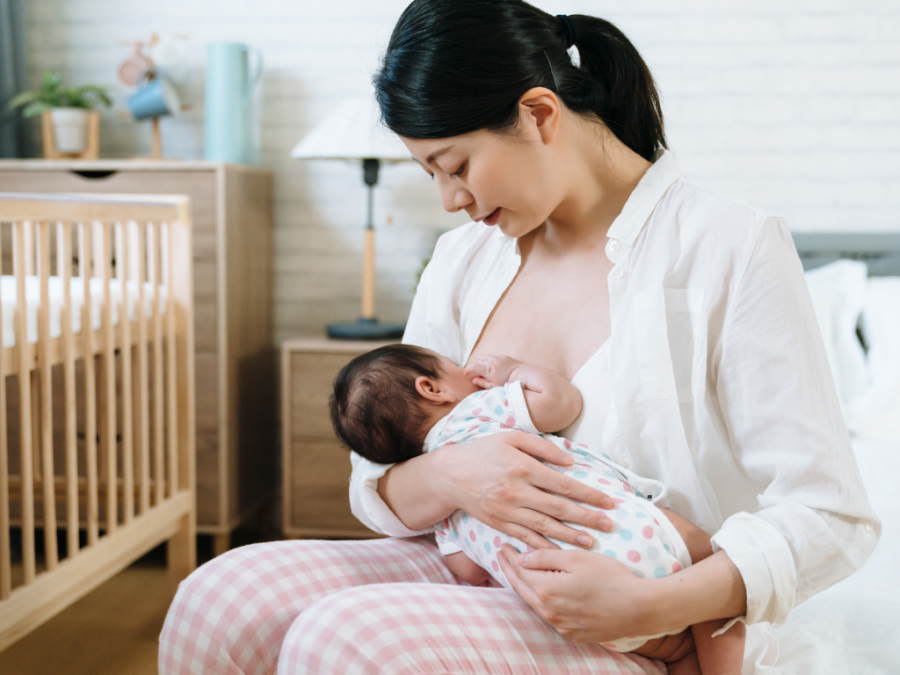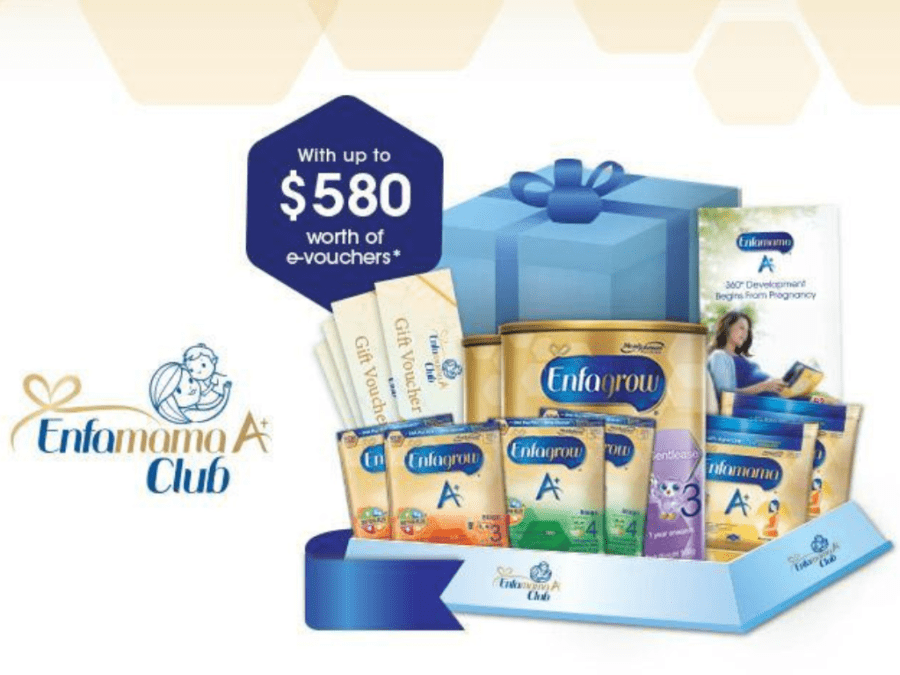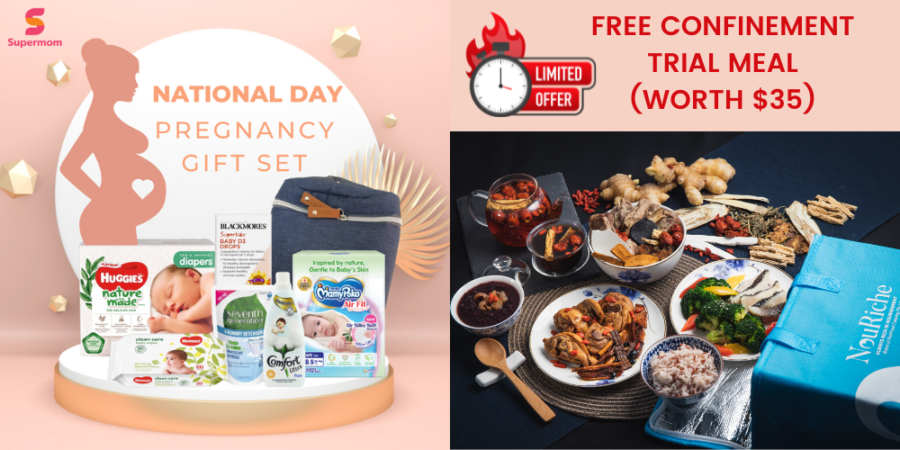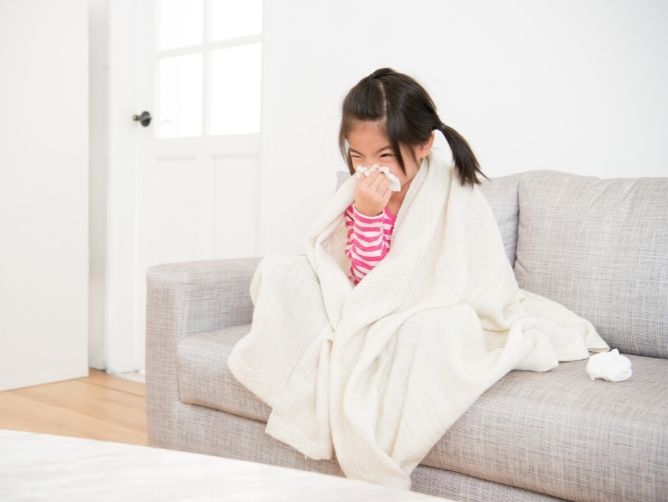Breastfeeding can be difficult enough even without the added stress of sore and cracked nipples. Unfortunately, cracked nipples are a common issue for breastfeeding mothers. While the pain can be excruciating, many would still want to continue breastfeeding their infants.
With this in mind, having the right nipple cream is a lifesaver for nursing mothers. It can help you get through the tough first weeks of nursing, helping you heal and bond with your baby without having to stop breastfeeding.
Table of Contents
ToggleHow breastfeeding can affect your nipples
If you’ve just started breastfeeding, then you’re probably experiencing soreness and cracking in your nipples. This is a normal occurrence for breastfeeding mothers, and in most cases, it’s nothing to worry about too much. However, it is of course painful and can make the experience of breastfeeding your newborn unpleasant.
Identifying cracked nipples is easy. If you experience a sharp pain in your nipples when your baby breastfeeds, then your nipples are most likely cracked. After breastfeeding, you may notice redness, irritation, blistering, or even bleeding on your nipples.
While it’s safe for you to breastfeed your baby when you have cracked nipples, it can also be painful. Thus, it’s important to have remedies on hand to make sure that your skin will heal more quickly.
What causes cracked nipples?
Cracked nipples are common among breastfeeding mothers, but they can actually happen to both men and women. Friction, chafing, and trauma in general can damage nipple tissue, and it’s not necessarily caused by breastfeeding alone.
However, if you’re breastfeeding, then cracked nipples can be caused by the following:
Improper latch
A good breastfeeding latch is important because it ensures that your baby is getting the milk they need and that you’re both comfortable. An improper latch can cause a variety of issues, including sore nipples. If you think your baby has an improper latch, ask for help from a lactation consultant or your pediatrician. They can show you how to correct the problem and make breastfeeding easier for both you and your child.
It can take time for some babies to learn how to latch correctly, and this process can cause nipples to be sore. Once your baby learns a proper latch, your breastfeeding experience will likely improve.
Bad breastfeeding position
It’s important to make sure that you and your baby are both in the right position while breastfeeding. Not only will this help your breasts produce enough milk, but it can also help prevent cracked nipples. You can breastfeed while cradling your baby in your arms, lying on your side, or lying on your back. These are optimal positions that are comfortable and effective.
Incorrect pump flange placement
If you’re pumping breastmilk as well, you can end up with sore nipples if the flange of the pump isn’t placed correctly on your breast. It’s important to remember that pumping shouldn’t hurt; at most, you should feel a gentle tugging. Make sure that your nipples are positioned in the center of the flange, and that the flange is the right size.
Teething
Many mothers still breastfeed even after their baby’s teeth start coming in. If your baby latches properly, the teeth shouldn’t be able to hurt you at all. However, your baby might bite down on your nipple at times, which can be painful and can also cause bleeding or cracking.
Breastfeeding can be a difficult experience, but you’re not without support. Sign up for the Enfamama A+ Club to get FREE Enfamama A+ and Enfagrow A+ samples. Enfamama and Enfagrow can help you stay healthy and provide your baby with the nutrients they need to grow strong.
Nipple cream as a remedy
Many things can help you with cracked nipples, and chief among them is nipple cream. Nipple creams work by softening the skin of your nipple and making it more pliant, which can then reduce friction during breastfeeding. Additionally, nipple cream can help the skin of your nipple heal more quickly, so you won’t have to endure pain while breastfeeding for too long.
However, nipple cream isn’t the only remedy, and you shouldn’t rely on it alone. You should also keep the following in mind:
Apply breastmilk to your nipple.
If you’ve run out of nipple cream or you don’t have it on hand, you can try putting your own breastmilk on the cracked skin of your nipples. After pumping, take a bit of your breastmilk and apply it to your skin. This can help relieve some of the soreness until your skin heals.
Avoid wearing tight bras.
Make sure that your bra fits you well and isn’t too tight because the friction from the cloth can make sore nipples worse.
Use gentle soaps and detergents.
Harsh soaps can make skin conditions worse. You don’t need a strong soap or detergent to make sure that your skin and clothes stay clean. A mild and fragrance-free soap can do the trick, like the Dove Sensitive Skin Unscented Beauty Bar or The Soap Haven Milk & Honey Goat Milk Soap. You can also use baby detergents to wash your clothes as well during the first months of breastfeeding.
Make sure to use fresh nursing pads.
It’s best to have a few spare nursing pads so you’ll always have a fresh and clean one every time you nurse. If you’re using reusable pads, make sure that you use them only once before washing them. Cracked nipples can get infected easily, and it’s also important to ensure that your nipples are as clean as possible for breastfeeding.
When used in conjunction with all of the above, nipple cream can work wonders for you. You can also start using nipple cream months before you even give birth. This can help prep your skin and reduce the possibility of cracked or sore nipples once you give birth and start breastfeeding.
Preparing for your baby’s arrival is an exciting time. Check out this FREE trial confinement meal from Nouriche worth $35! You can also get a free vegetarian option worth $45! You’ll also get other freebies that will help you prepare for your baby’s arrival.
8 best nipple creams
While these remedies can be helpful, using nipple creams can also help you heal faster and reduce the pain you feel. Additionally, the cream can create a protective layer on your skin, protecting it from moisture and allowing it to heal. Because of how well these creams work, you can even use them for purposes other than soothing sore nipples.
There are also two main types of nipple creams: lanolin-based and lanolin-free. Lanolin is a type of natural oil produced by the skin of sheep to coat their wool. It’s then extracted from the wool for commercial purposes.
While lanolin is safe for babies, it’s nonetheless animal-based. Many mothers prefer to use plant-based creams, which are also available on the market.
Lanolin-based
Lanolin-based creams help soothe and protect nipples from chapping, cracking, and infection. Some are made of 100% lanolin, while others have other ingredients such as coconut oil as well. These creams are formulated to be safe for babies, so you don’t have to worry about using these creams while breastfeeding.
Lansinoh Lanolin Nipple Cream

Best Overall Lanolin Nipple Cream
The Lansinoh HPA Lanolin Nipple Cream is one of the best nipple creams on the market and is known to be effective and reliable. It’s also widely available and accessible, so it’s available on a variety of platforms. Thus, if you run out or you need an effective nipple cream in a pinch, you’ll be able to easily get a tube of this cream.
Additionally, this is a hypoallergenic product made of pure HPA lanolin, which is free of any chemicals or pesticides that can be harmful to you and your baby. Thus, you won’t have to remove the cream when you have to breastfeed. It won’t harm your baby, and it can also help make breastfeeding a lot less painful. Because it’s made of pure lanolin, it doesn’t have any other ingredients that you’ll need to worry about,
It’s also easy to use and a little goes a long way. Squeeze a small amount from the tube onto your finger, then spread the cream over the skin of your nipples. Even a small amount will likely be able to provide a sufficient layer of protection for your skin. It also doesn’t have a strong smell or taste, so your baby won’t mind if you have this cream on your nipples.
Medela Purelan™ Lanolin Cream
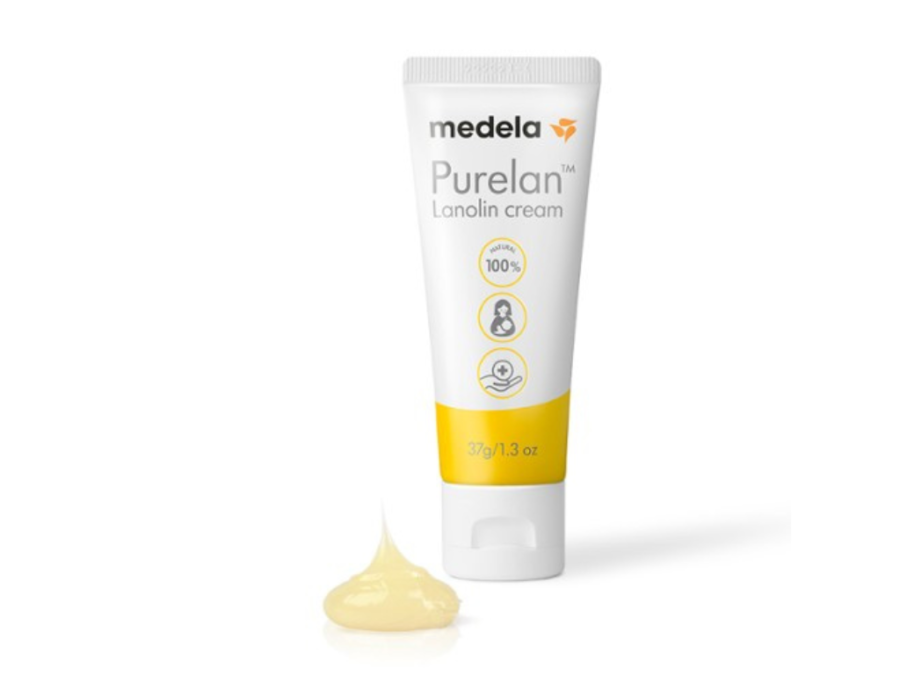
Best Multi-Purpose Nipple Cream
The Medela Purelan™ Lanolin Cream is a close contender for the top spot and is also a well-known and trusted nipple cream. It works well and can keep sore nipples protected from irritation and chafing while they heal. Additionally, it’s also available online as well as in physical stores.
Made of pure lanolin, this is yet another hypoallergenic single-ingredient nipple cream and thus doesn’t have any other ingredients that you or your baby might react to. It’s also safe to leave on your nipples while your baby breastfeeds. Not only does it protect your nipples as they heal, but it also provides a mild numbing sensation that can reduce pain.
Creamier and thicker than the Lansinoh lanolin cream, it’s nonetheless easy to spread and apply. It’s a bit like petroleum jelly and has a smooth, waxy texture as well. It also works surprisingly well as a kind of moisturizing ointment for dry, irritated, and flaky skin.
Pigeon Nipple Care Cream

Best Bang for Buck
The Pigeon Nipple Care Cream is a hypoallergenic cream made with pure lanolin, without any other ingredients. This nipple cream is one of the best nipple creams with lanolin, and it’s one of the best examples of why Pigeon is among the top baby brands in the world. It’s a highly reliable cream that can last for a long time, and you’ll likely be left with plenty of product even after you no longer need it.
A 50-gram tube of this cream might not seem like much, but you won’t need to use much product at all. A glob smaller than your pinky nail can generously cover your whole nipple. It’s also easy to spread, especially once it’s warmed up by your body heat. It doesn’t smell like anything, but it does feel warm and soothing on the skin.
Though this is an oil-based product, it doesn’t feel greasy or oily at all. It has a waxy texture and feels like a more liquid version of petroleum jelly. You won’t have to wipe it off while breastfeeding and it’s unlikely to have adverse effects on you or your baby.
Lanolin-free
Lanolin-based nipple creams are quite popular, but their lanolin-free counterparts are quickly getting traction as well. If you’d rather not use something with an animal-based ingredient, there are other alternatives that you can use. These ingredients can also give you some of the best nipple creams on the market.
These lanolin-free creams are typically made of natural materials that are safe for your baby. However, they’re also made of multiple ingredients, so be careful and make sure that they won’t cause a reaction.
Aleva Nursing Balm
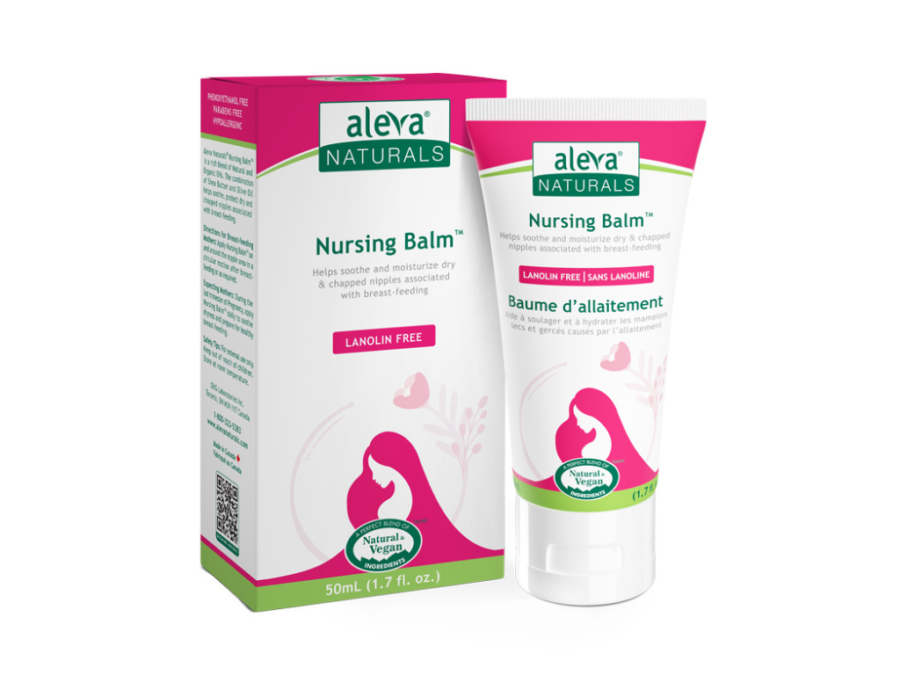
Top Plant-Based Nipple Cream
The Aleva Nursing Balm is a certified organic product that’s made of plant-based ingredients. It has castor oil, olive oil, shea butter, and more. All these ingredients can help nourish the skin and soothe soreness. Because it’s moisturizing, it makes the skin more pliant and less prone to cracking and irritation.
This nipple cream is also free of any synthetic additives or fragrances, so it’s unlikely to be irritating to you or your baby. It easily gets absorbed by the skin, and it won’t leave you with a sticky or greasy film on your nipples. It’s not recommended for ingestion, so make sure that you apply it after breastfeeding. If there is still any left on your skin when you’re about to breastfeed, make sure to wash it off completely.
Motherlove Nipple Cream
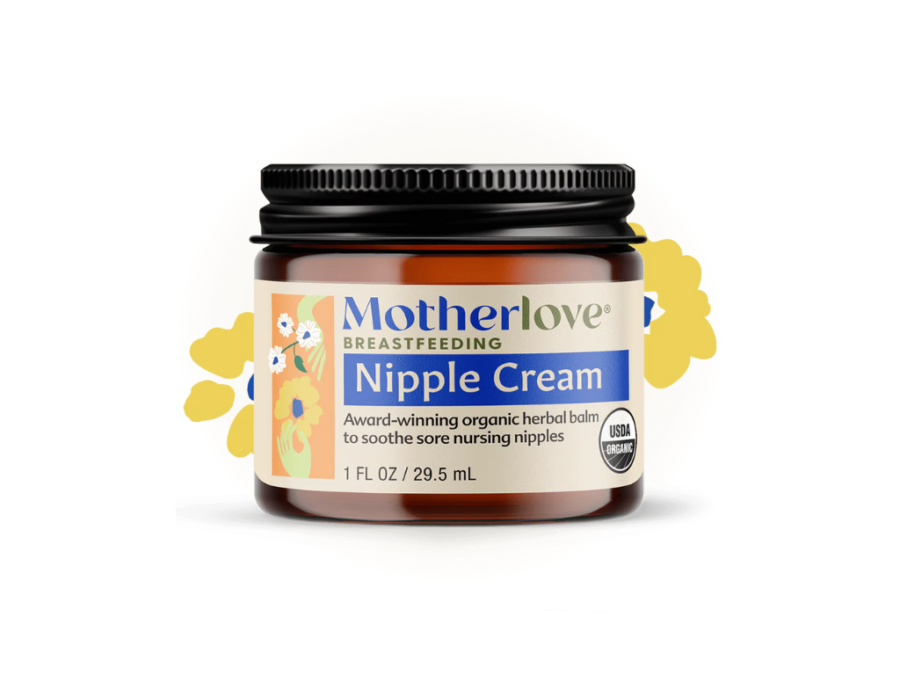
Best Sustainably-Sourced Nipple Cream
The Motherlove Nipple Cream is a versatile and effective nipple cream made of certified organic plant-based ingredients. With shea butter, olive oil, beeswax, marshmallow root, and calendula flower, you’ll get the benefits of different high-quality ingredients.
This product comes in a jar and looks and feels more like a balm than a cream. You can take just a small amount from the jar, then rub it between your fingers to soften it. This will make it easier to spread on your skin. You can even use it to coat the inside of breast pump flanges, which can help reduce friction as you pump. It’s much thinner in consistency than lanolin, so it’s easier to spread and is less greasy.
One thing to watch out for, however, is that this balm can stain your clothes. Make sure you wear pads or a nursing bra to avoid this.
Palmer's Nursing Butter

Most Nourishing Nipple Cream
While this brand is more known for its stretchmark cream, it also offers a highly effective nipple cream. Palmer’s Nursing Butter is a smooth and moisturizing product that can help moisturize dry skin and prevent cracking and soreness. It works fast and is easily absorbed by the skin, so just a small amount of the product can go a long way.
This product has petrolatum (or petroleum jelly) and cocoa butter as its key ingredients. It thus spreads easily on the skin and feels warm and soothing. Additionally, it has vitamin B5, which is a common ingredient in many skincare products. Vitamin B5 has anti-inflammatory properties, which can help soothe sore nipples.
If you notice that your baby has dry lips, you can leave this balm on your nipples while you breastfeed. It can then coat your baby’s lips and moisturize them as well. However, if you’re not comfortable with leaving it on while breastfeeding, you can also wash it off prior to breastfeeding or just apply it afterward.
Mama Mio Keep Calm Nipple Balm
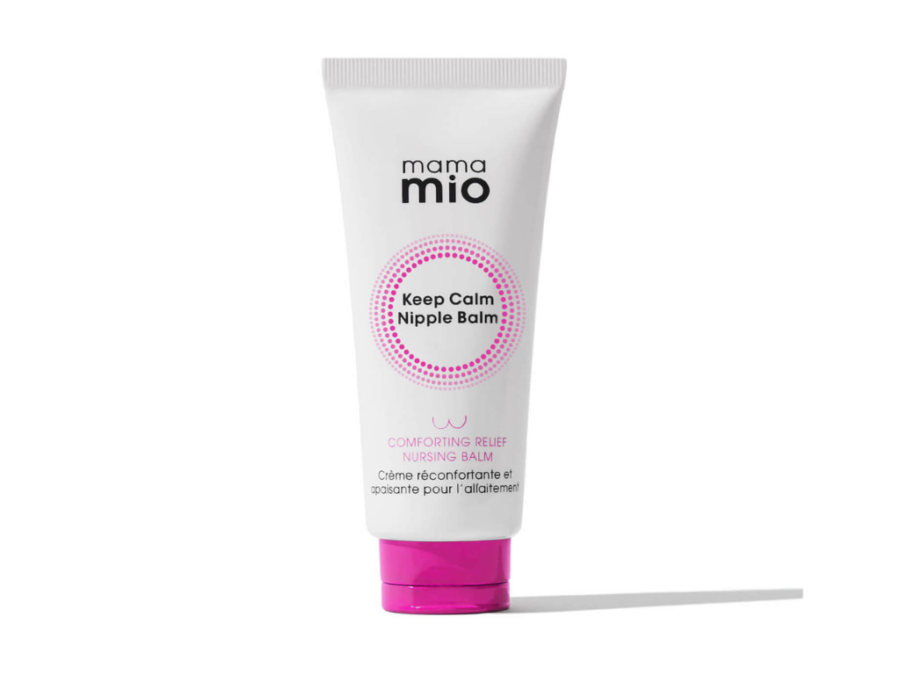
Top Vegan Nipple Cream
The Mama Mio Keep Calm Nipple Balm is made of several products, including vegetable oil, shea butter, coconut oil, vitamin E, avocado oil, and more. It’s also a versatile product that you can use for other purposes, like moisturizing dry patches on your elbows or hands.
Not only is this product moisturizing, but it’s soothing as well. It can help reduce pain once applied to your nipples, which can give you a break from soreness and irritation. Additionally, it’s fragrance-free and gentle on the skin. You can apply it to your nipples after breastfeeding, but make sure to wash all of it off your nipples if you put it on before breastfeeding.
References
- https://www.nhs.uk/start4life/baby/feeding-your-baby/breastfeeding/how-to-breastfeed/latching-on/
- https://www.nhs.uk/start4life/baby/feeding-your-baby/breastfeeding/how-to-breastfeed/breastfeeding-positions/
- https://www.healthline.com/health/pumping-nipples
